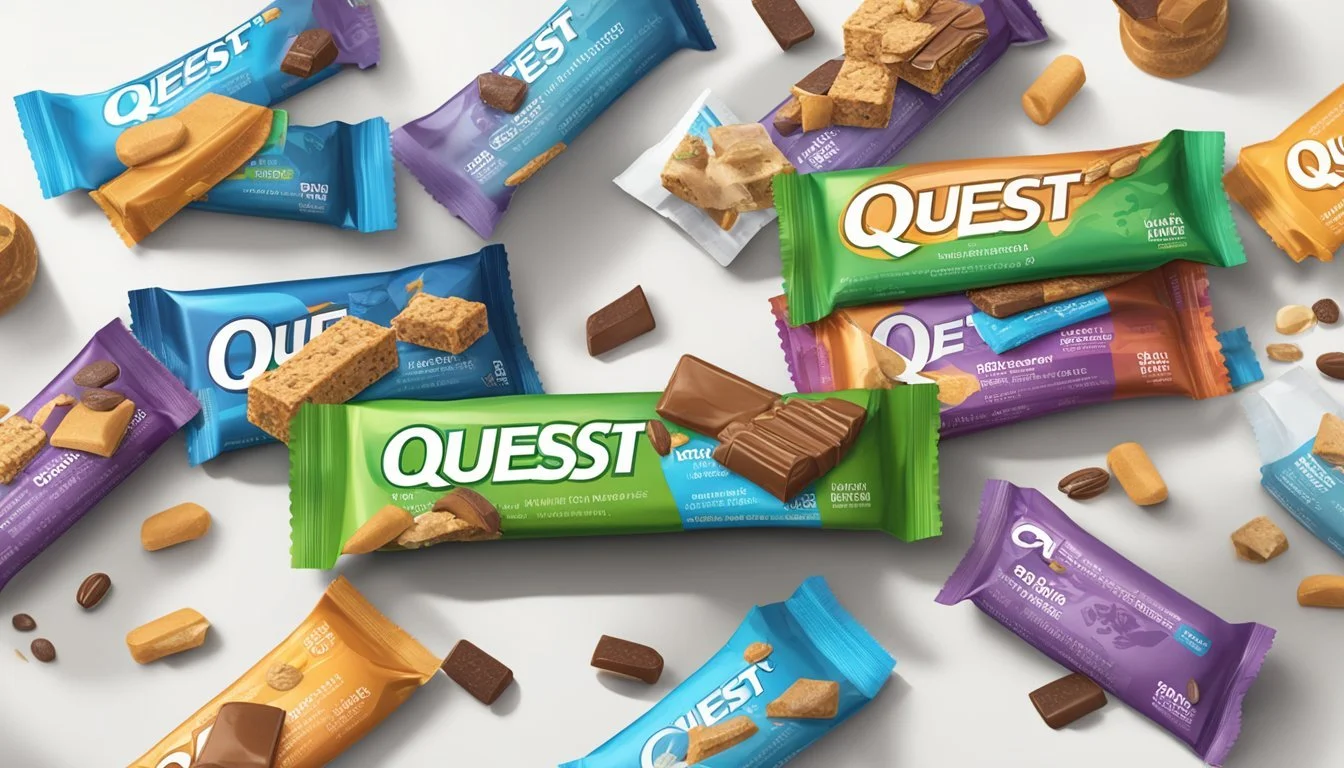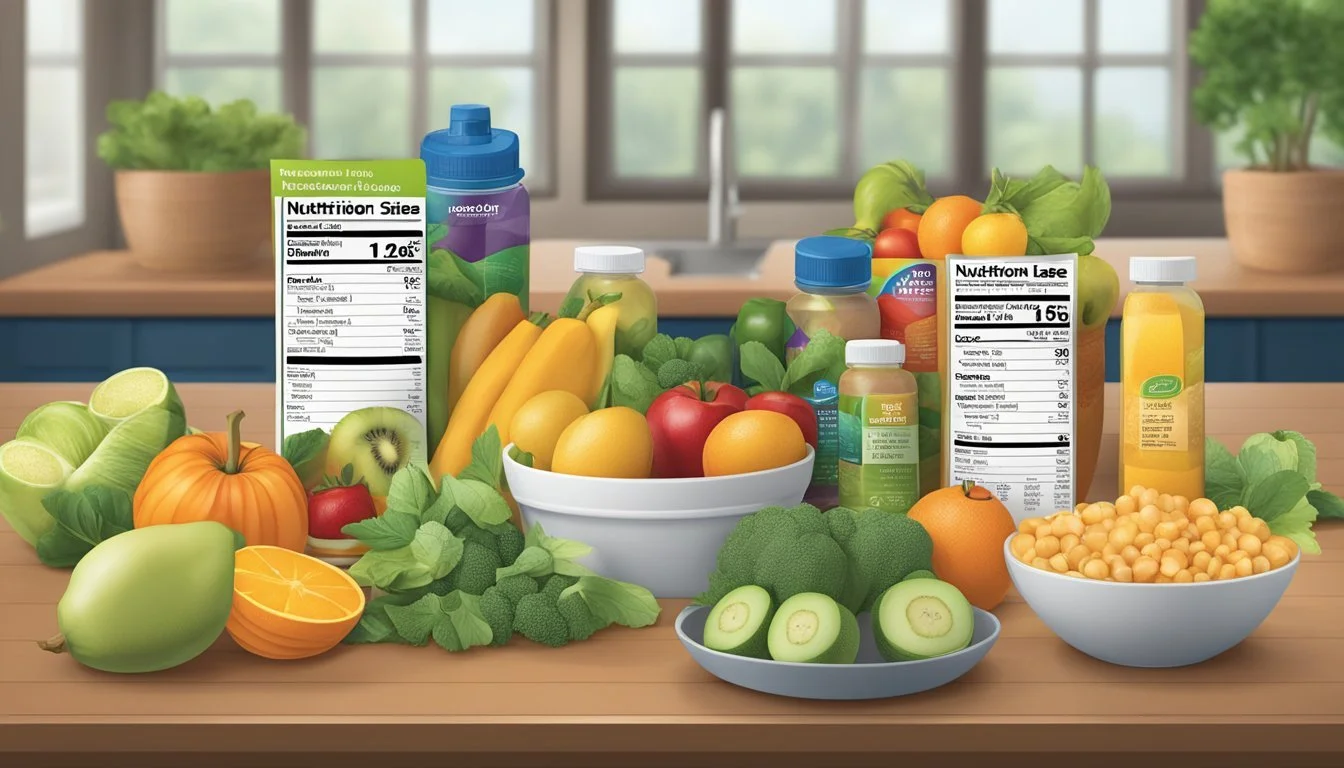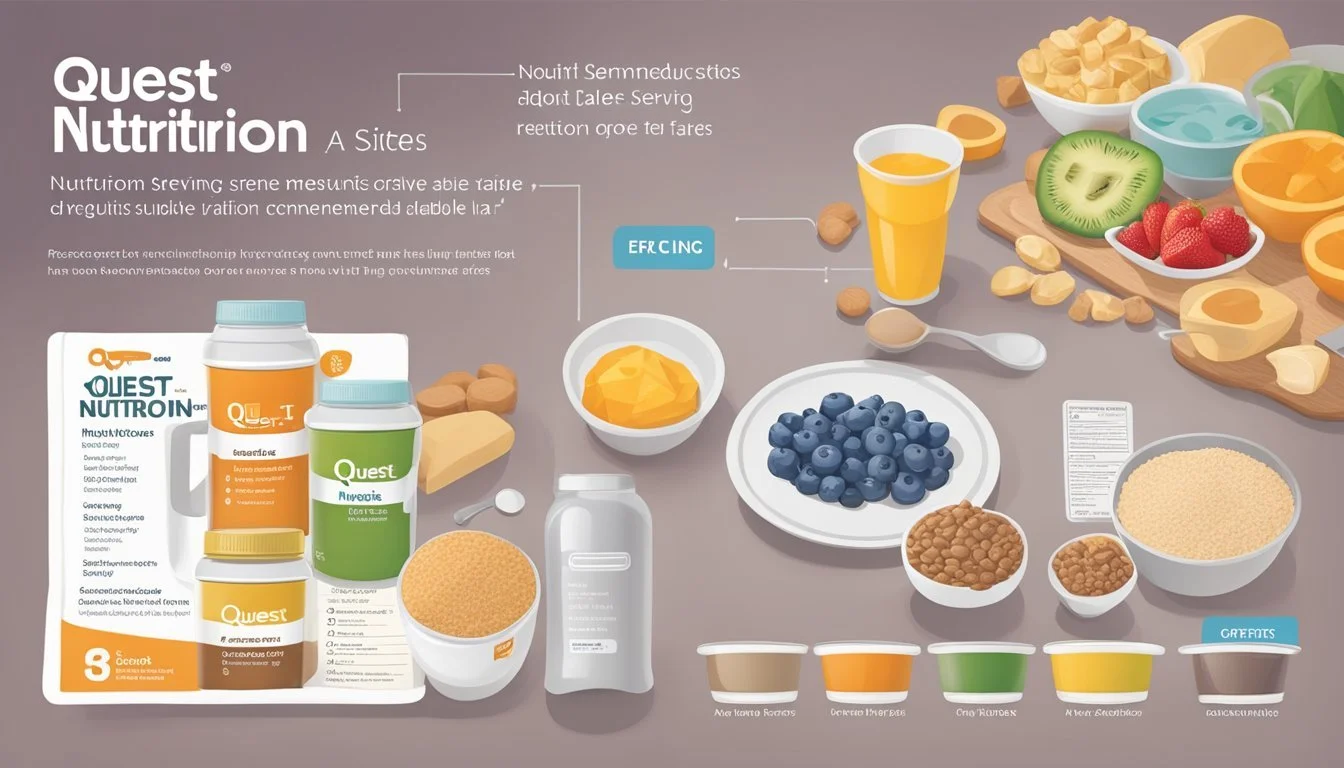How Many Servings of Quest Nutrition Is Too Much
A Clear Guide
When it comes to determining how many servings of Quest Nutrition products, such as Quest Bars or Quest Protein Chips, are too much, it is essential to consider both their nutritional content and your dietary needs. Consuming more than one or two servings a day could lead to an excessive intake of protein and fiber, potentially leading to digestive discomfort and overshadowing the need for a balanced diet.
While Quest Nutrition products offer a convenient and high-protein option, their consumption should complement a diet rich in fruits, vegetables, whole grains, and healthy fats rather than replace these essential food groups. Some Quest products may also contain sugar alcohols and other ingredients that can be problematic in large amounts.
Understanding this balance is crucial for maintaining overall health and well-being. By integrating Quest Nutrition offerings with other nutrient-dense foods, individuals can enjoy the benefits without the downsides of overconsumption.
Understanding Quest Nutrition Products
Quest Nutrition offers a range of products designed to fulfill various dietary needs focusing on low sugar, high protein, and tasty flavors. Key areas to explore include ingredients and nutritional profile, product variety, and the benefits of high-protein snacks.
Ingredients and Nutritional Profile
Quest Nutrition products are known for their low sugar content and high-quality ingredients. The use of sugar alcohols like erythritol and stevia leaf extract ensures sweetness without the high sugar spikes. Each serving typically contains:
Protein: Essential for muscle repair and growth.
Fiber: Helps in maintaining digestion and provides satiety.
Fat: Mostly from healthier sources.
Carbohydrates: Kept low to support different dietary plans.
Here’s an example of a typical Quest product's nutritional breakdown per serving:
Nutrient Amount Calories 120 Kcal Total Fat 2g Cholesterol 10mg Sodium 160mg Potassium 75mg Carbs 5g (2% DV) Protein 20g Fiber 15g
Variety of Flavors and Products
Quest Nutrition provides a vast selection of products, ranging from protein bars to protein chips. They offer:
Protein Bars: Available in flavors like Chocolate Chip Cookie Dough, Cookies & Cream, and more.
Protein Powders: These come in variety packs and single flavors, suitable for shakes and baking.
Protein Chips: A crunchy snack alternative to traditional chips.
Cookies and Pizzas: Choices for those looking for high-protein meal replacements or desserts.
Quest’s variety ensures there is something for everyone, catering to different taste preferences and dietary goals.
Benefits of High-Protein Snacks
High-protein snacks have numerous benefits:
Muscle Maintenance: Protein aids in muscle repair and growth, essential for active individuals.
Satiety and Weight Management: High protein and fiber content help keep you fuller for longer, aiding in weight loss or maintenance.
Convenient Healthy Snacks: Ideal for on-the-go nutrition without the guilt of high sugar and unhealthy fats.
Quest products serve as excellent options for those seeking to meet their protein needs, supporting both health and fitness goals. They're practical for those aiming to lose weight or maintain muscle while enjoying flavorful snacks.
By focusing on ingredients and nutritional balance, Quest Nutrition ensures their products are both enjoyable and beneficial to health-conscious consumers.
How Quest Nutrition Can Support Dietary Goals
Quest Nutrition offers products that can aid in weight management, muscle gain, and meeting specific dietary needs. Their high-protein, low-carb options are designed to help users stay on track with healthy eating habits.
Weight Management and Muscle Gain
Quest Nutrition products are ideal for weight management and muscle gain due to their high protein content. Consuming adequate protein helps maintain muscle mass during weight loss and supports muscle recovery post-workout. Each Quest bar typically contains 20-21 grams of high-quality protein, which can help meet daily protein requirements.
For those trying to lose weight, the low net carb content is beneficial. Quest bars often have less than 5 grams of net carbs, making them suitable for low-carb diets. This helps in reducing overall calorie intake, essential for weight loss.
Meeting Specific Dietary Needs
Quest Nutrition caters to various dietary restrictions and preferences. Many of their products are gluten-free and soy-free, which is crucial for individuals with specific allergies or intolerances. Additionally, they offer options that are non-GMO and contain no added sugars, promoting a cleaner diet.
Plant-based protein options are also available for vegan or vegetarian individuals. These products still provide the essential amino acids needed for muscle repair and overall health. Consult a dietitian to ensure that these products fit well into a specific dietary plan.
Managing Cravings and Healthy Alternatives
One of the standout features of Quest Nutrition is its ability to curb cravings for unhealthy snacks. The bars and snacks mimic the taste and texture of indulgent treats like candy bars and cookies, but with a healthier nutritional profile.
Replacing traditional high-calorie snacks with low-carb, high-protein alternatives can support weight loss and overall health. Consuming a Quest bar instead of a sugary snack can help maintain blood sugar levels and reduce the likelihood of binge eating.
This makes it easier to form healthier eating habits while still enjoying flavorful snacks.
Analyzing the Quest Nutrition Ingredients List
Quest Nutrition products are known for their quality and health benefits. Key aspects to analyze include the protein sources, sweeteners, and other additives used in their items.
Protein Sources in Quest Products
Quest Nutrition frequently uses whey protein isolate and milk protein isolate as primary protein sources. Whey protein isolate is notable for its high protein content and minimal fats and carbohydrates.
In addition, some Quest products incorporate micellar casein, a slower-digesting protein. These proteins are praised for their high quality and effective muscle support. Plant-based proteins are less common but can also be found in some options, providing alternatives for those with dietary restrictions.
Sugar and Sweeteners Used
Quest Nutrition prioritizes low sugar content in its products. Natural sweeteners like stevia and erythritol are often utilized. Stevia is a plant-based sweetener with zero calories, while erythritol is a sugar alcohol that provides sweetness without spiking blood sugar levels.
Sucralose is another sweetener commonly found in Quest items. It is an artificial sweetener that offers intense sweetness without calories. These elements ensure that the products remain sweet yet low in sugar, catering to health-conscious consumers.
Other Notable Additives and Fillers
Various additives and fillers enhance the texture, flavor, and shelf life of Quest products. Sunflower lecithin is a common ingredient, aiding in blending and consistency. Natural flavors are also prevalent, contributing to the product's palatability.
Processed ingredients like palm oil may be present to improve texture, while fiber from nuts or other sources is often included to boost nutritional value.
Preservatives and other processed ingredients might be used sparingly to extend shelf life, though the products generally avoid highly processed fillers. This careful selection of additives ensures that Quest products are both nutritious and enjoyable.
Potential Health Concerns and Questions
When consuming Quest Nutrition bars, several potential health concerns and questions arise regarding digestive health, nutrients balance, and effects on blood sugar and energy levels.
Digestive Health and Allergens
Quest bars contain a significant amount of fiber, often derived from sources like soluble corn fiber. While fiber generally promotes good digestive health, excessive intake can cause bloating, gas, and discomfort. Some individuals may also experience inflammation due to high intake of certain fibers.
Additionally, Quest bars may contain allergens such as nuts, dairy, and soy. They are gluten-free, which is beneficial for those with gluten sensitivity or celiac disease. Careful attention to ingredient lists is essential to avoid adverse reactions.
Key points:
High fiber content may cause bloating and discomfort.
Contains common allergens like nuts, dairy, and soy.
Gluten-free but not suitable for everyone.
Balancing Macronutrients and Micronutrients
Quest bars boast a high protein content, which is beneficial for muscle repair and growth. However, consuming too many can lead to an imbalance in macronutrient intake, especially if it exceeds daily protein needs.
The carbohydrates in Quest bars are often from high-intensity sweeteners and sugar alcohols. These may not contribute significantly to net carbs but can affect digestion. The fat content, while moderate, must also be considered in the context of overall diet.
Points to consider:
High protein content: beneficial but must be balanced.
Carbohydrates from sweeteners and their effects.
Moderate fat content.
Impact on Blood Sugar and Energy Levels
Quest bars use sweeteners like sucralose and erythritol, which may not spike blood sugar levels. This is beneficial for those managing diabetes or insulin sensitivity. However, some research suggests that artificial sweeteners can lead to increased cravings for sweet foods, impacting food choices later in the day.
The high fiber and protein content in Quest bars can also provide sustained energy. Ensuring that these bars fit within a balanced diet helps maintain stable energy levels without unexpected spikes or crashes.
Important considerations:
Sweeteners do not spike blood sugar but might increase sweet cravings.
High fiber and protein offer sustained energy.
Balance with overall diet is crucial.
Guidelines for Consumption
Understanding the proper consumption of Quest Nutrition products helps in maintaining a balanced diet. Key considerations include adhering to daily nutritional needs, identifying excess consumption, and effectively incorporating these products into a well-rounded eating plan.
Understanding Recommended Daily Intake
Dietitians suggest that meeting nutrient needs through whole foods like fruits, vegetables, and whole grains is ideal. Quest Nutrition products can supplement a diet but should not replace these sources. For protein, the recommended daily intake is about 46 grams for women and 56 grams for men. Caloric needs vary based on age, sex, and activity level, typically ranging from 1,800 to 2,400 calories per day for adult women and 2,200 to 3,000 for men.
How Much Is Too Much?
Consuming too many Quest Nutrition products can lead to an excessive intake of certain nutrients, especially protein and artificial sweeteners. For instance, overconsuming high-protein bars may exceed recommended protein limits, potentially causing kidney strain. Moderation is key; for most people, 1-2 servings of Quest products per day is sufficient to avoid negative health impacts while satisfying dietary needs.
Incorporating Quest Nutrition into a Balanced Diet
To balance Quest Nutrition products within a diet, combine them with other nutrient-dense foods. Whole grains, fresh vegetables, and fruits should dominate meals. A breakfast might include a Quest bar with a side of mixed berries, while lunch could pair a Quest shake with a whole-grain salad. Consult a dietitian for personalized advice, ensuring all nutritional bases are covered adequately.
The Quest Nutrition Brand and Consumer Trust
Quest Nutrition is widely recognized for its commitment to producing high-quality, protein-rich snacks. The brand's dedication to ingredient sourcing, its position in the healthy snack market, and positive customer feedback are key aspects that reinforce consumer trust.
Quality Control and Ingredient Sourcing
Quest Nutrition prides itself on strict quality control measures to ensure product integrity. Ingredients are non-GMO and sourced to meet high standards. Their protein sources, including milk and egg whites, contribute to the high protein content in their products.
Their transparent ingredient lists build trust among health-conscious consumers and athletes. By avoiding cheap amino acid mixes, Quest maintains product quality and consumer confidence.
Position in the Healthy Snack Market
Quest Nutrition has carved a significant niche within the healthy snack market. Their focus on high protein, low sugar, and low carb options sets them apart from competitors. The variety of flavors available in products such as protein bars and chips appeals to a broad audience.
Their growth, highlighted by their acquisition by Simply Good Foods Co. in 2019, reflects their strong market position. As more people seek nutritious alternatives, Quest's offerings continue to attract positive attention.
Customer Feedback and Reputation
Customer feedback plays a crucial role in Quest Nutrition’s reputation. Reviews often highlight the taste and nutritional benefits of their snacks. The brand's dedication to quality and innovation results in largely positive feedback from both casual consumers and athletes.
Consumers appreciate the balance of flavor and health benefits, which strengthens brand loyalty. Direct channels for customer interaction, such as live chat and email support, further enhance trust and satisfaction.








